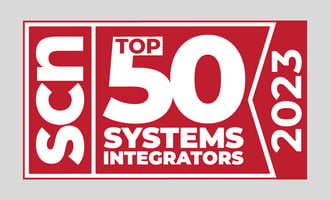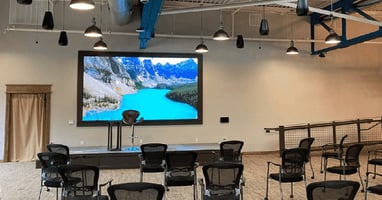FOR IMMEDIATE RELEASE [Chicago, Nov. 29, 2023] — ACP CreativIT, a leading provider of innovative...
Why Switch from Traditional AV Systems to AV over IP
Many professionals in the pro audio-visual (AV) space know how traditional AV setups can become very complicated and expensive. Some are even still using coaxial cables to run their audio-visual feeds from one point to another. This is where AV over IP can increase capabilities while keeping the budget in check.

AV over IP, which means internet protocol, sends data over LAN and WAN networks. AV over IP is referring to the use of standard network equipment to transmit and switch video and audio signals instead of using conventional analog AV environments. Millennials who “claim” to enjoy their music the old school way might already be listening to it the new way which is over the internet. This means the idea isn’t really a new one at all. In fact, it has been around for a while and used in everyday applications, such as LED billboards, concerts, security systems, college stadium video boards, speakers, and on demand streaming of sports, movies and shows.
More and more we are noticing conventional analog video, audio, and security systems are being replaced with IP-based infrastructures. This is particularly true for larger, more complex and longer distance transmission systems. For some installers or integrators, using IP AV technology is a somewhat new experience and concept. However, with the growing adaption and desire for smart home devices, the movement towards technology devices like ‘IP end points’ is becoming much more common and accepted.
Currently, there is an increasing range of IP-based technologies available on the professional AV market from all manufactures. Some products such as video over IP, audio over IP, IP intercoms and IP cameras are quickly becoming the new normal. With the expansion of the internet-of-things coupled with the expectations of users and integrators, IP connected devices are growing at an accelerated pace.
Requirements and hardware elements are similar in both analog and IP-based AV environments. The AV facilities objective is to give the users the capacity to see and hear their video and sound sources on their own viewing stations as well as their sound systems and speakers. For this to be done, the sources should be captured, moved, switched and displayed. The interface for the user to change sources can be buttons on hardware equipment all the way to digital interfaces on computer-based technologies. Examples of these are cloud-based user interfaces, mobile apps, touch screens, or specific tablet devices. AV transmitters become IP encoders, the AV receivers become IP decoders and the AV switcher becomes a standard IP switch which is controlled by software.
While the traditional AV and AV over IP structures are relatively the same, the actual working parts are different, especially when it comes to the AV switcher. This is where the flexibility, scalability, and potential cost savings of an AV over IP network really start to shine. AV over IP has evolving aspects including breaking distance barriers, better ratio of inputs/outputs, new options for video processing, convergence with data as well as communications, video standards that extend beyond the local facility and scalable switching, which means the number of sources attached is no longer limited. The latter allows for multiple IP switches to be connected and expand. Standard video matrix switchers use fixed inputs and outputs. 8x8, 16x16, up to 128x128 or more. This is fine until you need a 17th display on a 16x16 system. In an IP based system, just add another IP decoder.
Cost of wiring is one of the main differences between traditional AV and AV over IP. On average, ethernet cabling is usually cheaper than purpose specific AV cabling. Since CAT-5e or higher cabling carries AV over IP, which usually is capped at 100 meters, your distances have some limitation between switches. However, many AV over IP products now support fiber optic cabling for even longer distances. With ethernet there is almost no distance that cannot be covered. Ethernet will usually be cheaper in the long run, though it is easier if your locations are stationary.
The traditional AV system already uses many components that people are familiar with today including HDMI, display port, SDI and more. AV over IP uses the same type of cabling for transmitting videos but over different transmission standards. This includes many of the specifications such as H.265, H.264, JPEG-20000 and more. Therefore, the AV over IP network transmission includes encoders and decoders. It should be noted that switches used for AV also need to be configured/ preconfigured to meet industry standards.
One of the biggest common misconceptions is that AV over IP introduces security risks that the conventional analog AV doesn’t. However, this is not the case! There are encryption technologies for the various aspects of IP products, while still addressing multiple components of the AV system design. Another benefit is that in addition to sending audio and video where it needs to go, your newly installed switches and access points can help send any network communication right on its way. Also, you can use the switches to run your business network, picking which ports are dedicated to AV transmission and which ones are only for network traffic which pertains to the internet, data transfer, files and more. You can dedicate ports to any video you want, such as TVs, display boards, and other media purposed devices, while keeping everything else only dedicated to computers.
Larger, more complex systems require higher bandwidth, longer distance transmission, or even plans for future expansion. The flexibility that this offers leaves no doubt that it’s the future of AV system transmission and control.
Want to learn more about AV over IP systems? Reach out to our experienced AV team to learn more.



